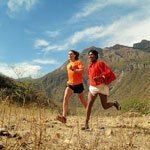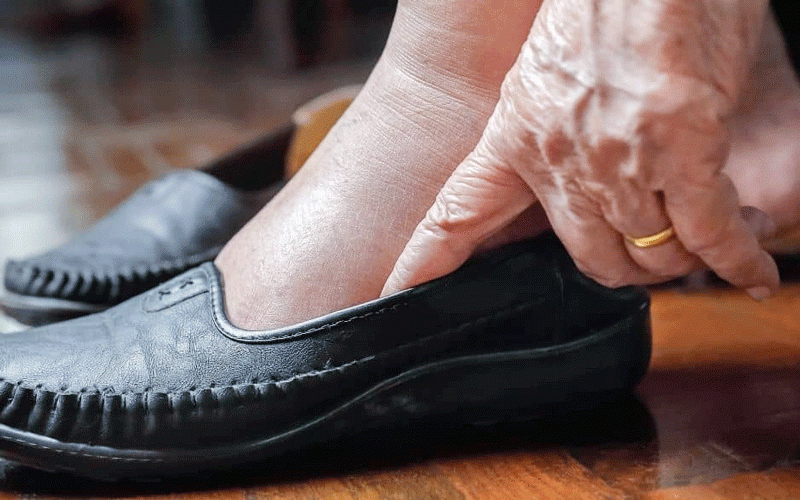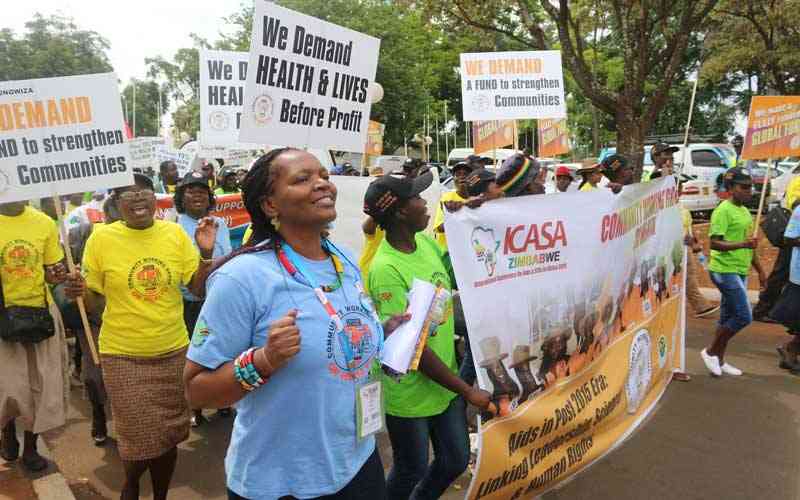
Edmund Makutya, featured here last week, successfully defended his title in Victoria Falls last weekend, winning the wheelchair half marathon for the third consecutive year.
Report by Rosie Mitchell
The disabled section of this annual event which attracts hundreds of runners from all over the world and offers a full and half marathon, is sponsored by Amalinda Collection, the group of lodges which also stepped in to ensure that Edmund, recently retrenched, was able to travel to the Falls this year. Edmund and other disabled people who rise to the challenge of entering races in their wheelchairs are an inspiration, at whose determination we can but marvel.
I marvelled, too, at the astonishing prowess of the Tarahumara people of Mexico, accidentally catching a snippet of a documentary this week on Discovery Channel.
These indigenous American people who call themselves Rarámuri, meaning, roughly, “runners on foot”, or “those who run fast”, live in north western Mexico and amaze scientists with their astonishing ability to run distances that defy even the most seasoned extreme sportspeople, demonstrating a level of endurance that seems superhuman, and certainly, greater than that of the best Olympic athletes.
They do this either in bare feet or in basic sandals, hand-made out of deer skin and old tyres, and regularly run races of 300 to 500km, non-stop, through the rugged mountainous terrain that is their home.
- Chamisa under fire over US$120K donation
- Mavhunga puts DeMbare into Chibuku quarterfinals
- Pension funds bet on Cabora Bassa oilfields
- Councils defy govt fire tender directive
Keep Reading
The Tarahumara record is a continuous 700km in just over 48 hours — 16 times further than a marathon! Running is an integral part of this tribe’s culture, and they all do it — men, women, children, young, old. Running for survival by persistence hunting, and for inter-village communication, transport, message delivery, sport and recreation, they run into their 80s and 90s and many live to be well over 100. With widely dispersed settlements, their ancient tradition of ultra long-distance running through their rugged mountain territory has continued from generation to generation.
What is their secret? Our evolutionary history as hunters is the key, using persistence hunting to catch prey. This involves pursuing prey over very long distances till the animal, unable to sweat as we do to cool itself down, and no longer able to pant, simply cannot run any longer, due to heat exhaustion. Were we as a species simply born to run? It seems so. We enjoy many physical features and abilities that facilitate long distance running — but in the modern lifestyle, we simply don’t use these any more. The Tarahumara, however, still do.
Because they run in bare feet or rudimentary sandals, they run differently from most modern long distance runners. This could be key to their apparently superhuman endurance. In running shoes, the heel strikes the ground first, and ground reaction force travels from heel and foot through our centre of mass. In the last few years, there has been much speculation and research going on about this very issue —whether wearing running shoes works for us, or perhaps, against us.
With the heel striking first, we are actually more likely to sustain a running injury, since there is greater impact on both our legs and feet. Simple experiments show that in bare feet, we land mid- to forefoot, with less impact, and those rather bizarre looking Vibram Five Fingers “shoes” (and other brands which have followed suit) which are as close to bare feet as you can get without actually going barefoot (hence protecting your feet from broken glass, thorns and pathogens) are growing more popular with walkers and runners alike.
Of course, we’ve all seen super-fast barefoot runners in half and full marathons, and marvelled at them —there were several barefoot front runners in the recent Kariba Half Marathon and Vic Falls Half and Full Marathons, and plenty of elite runners from our continent, some of the fastest in the world, didn’t put on a running shoe until they first began competing as adults, in international events. By that time, their running stride, mid to forefoot impacting first, was so instinctive it continued seamlessly, shoes or no shoes.











